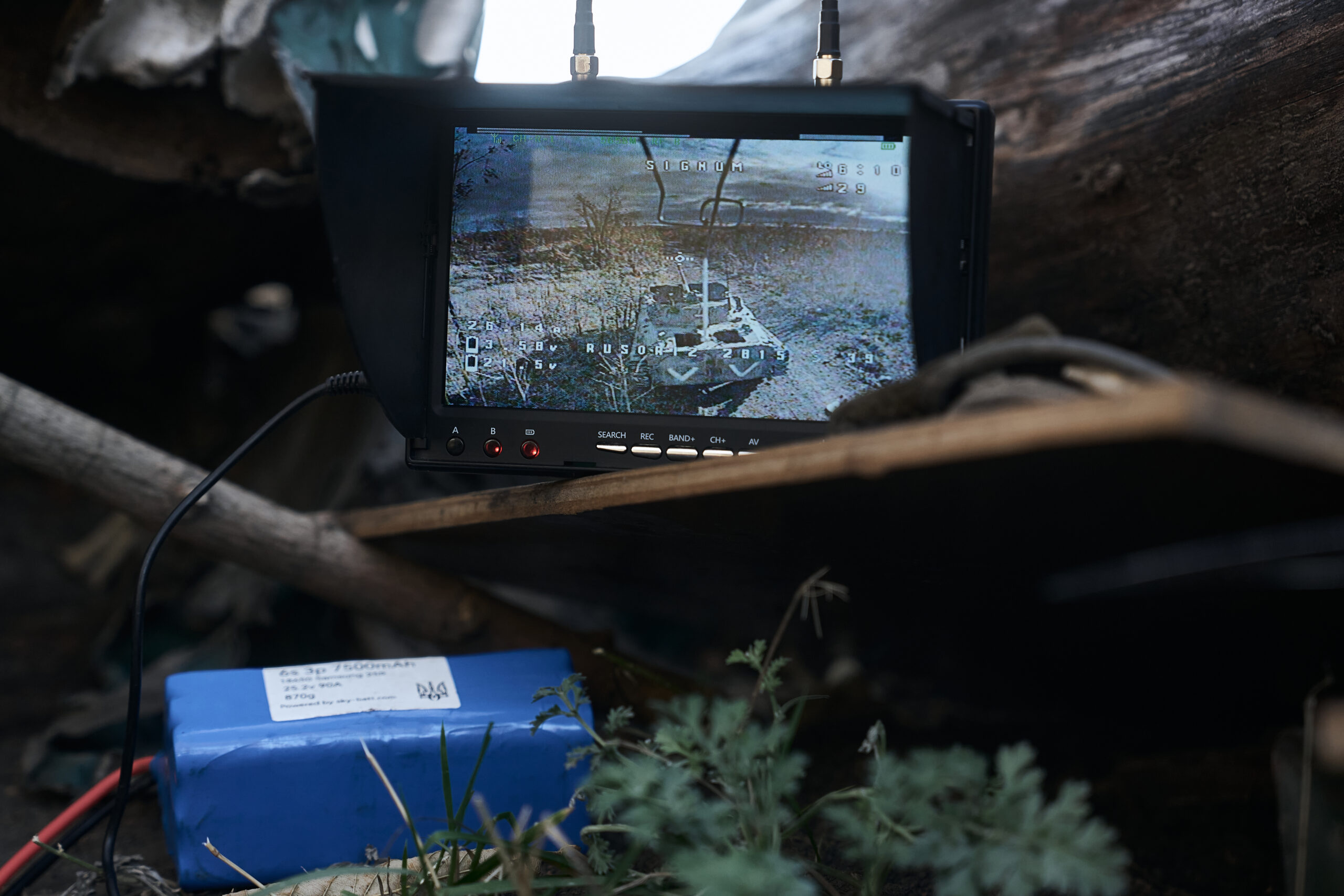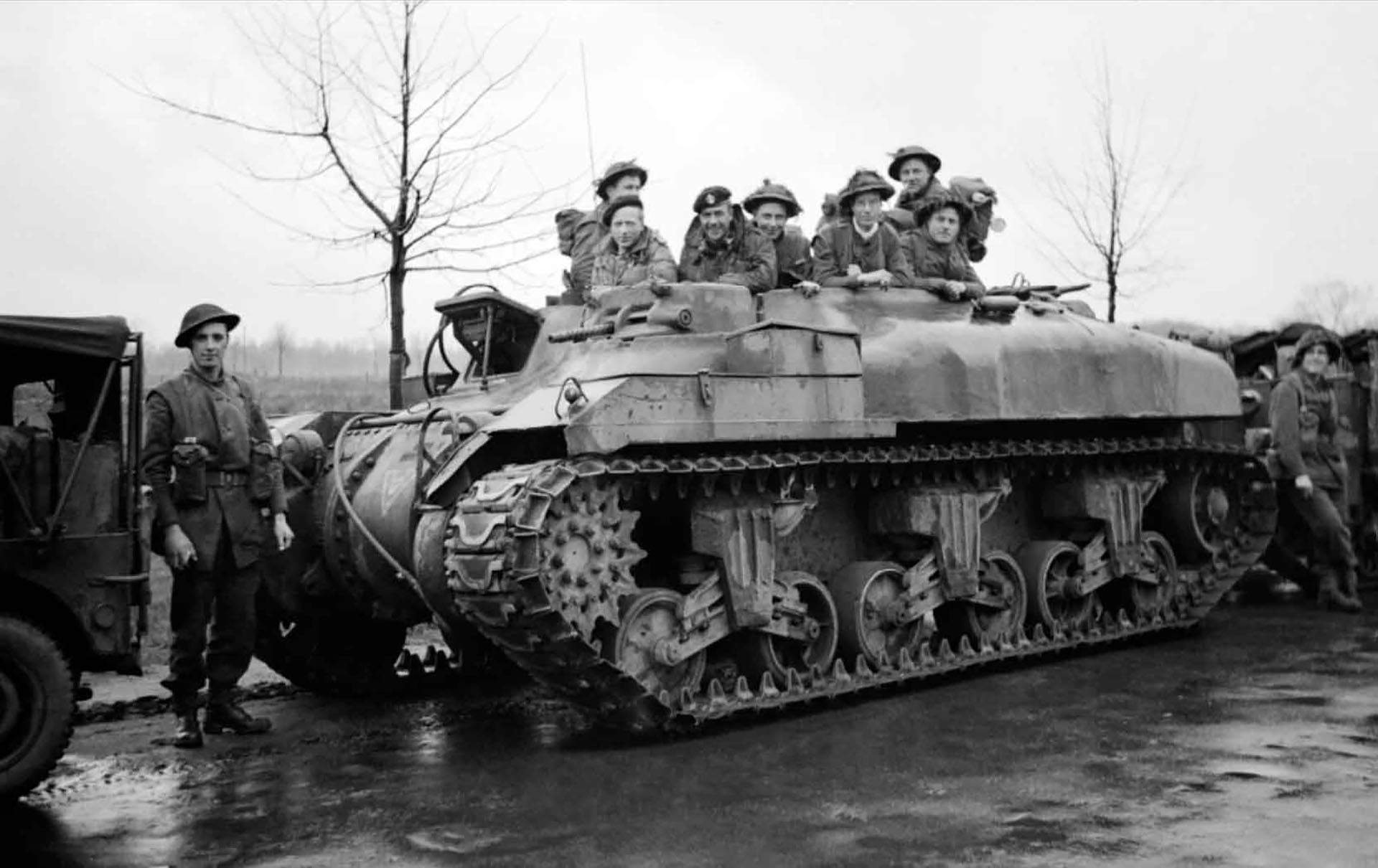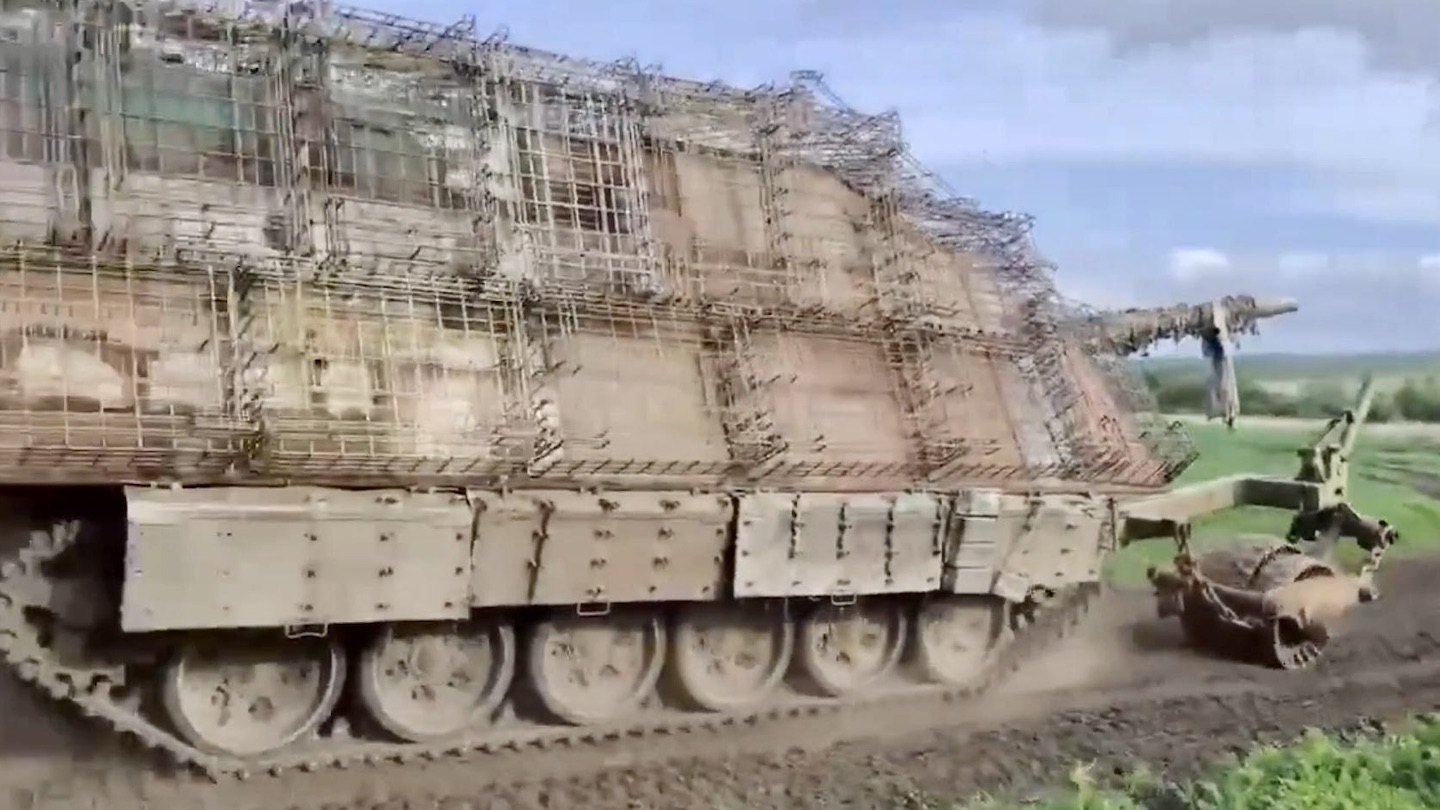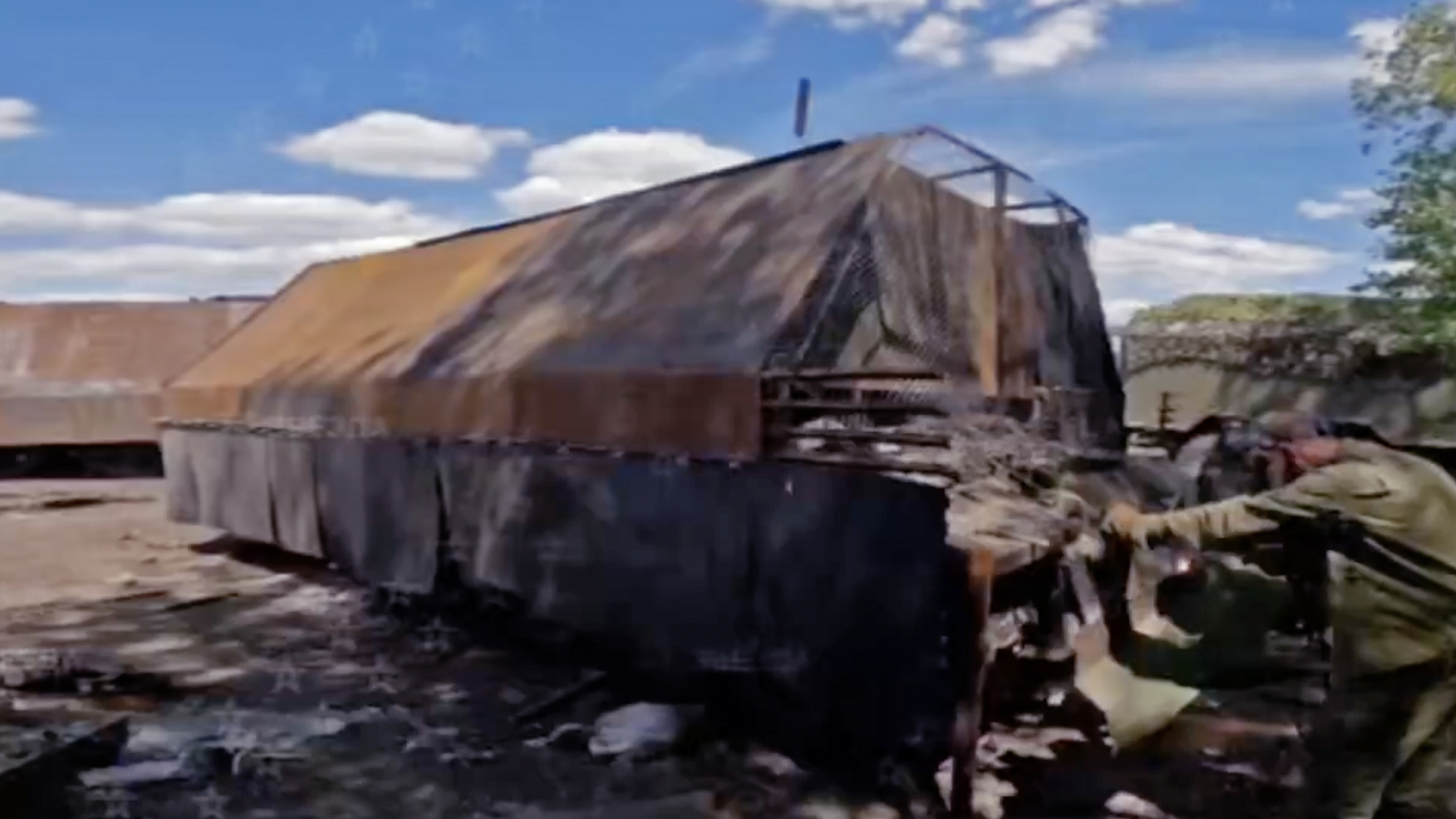Russia has presented its latest take on the bizarre-looking ‘turtle tank’ concept, with a worn-out main battle tank adapted as an armored personnel carrier, complete with the now familiar sheet-metal carapace. The development provides another example of Russia repurposing vehicles to meet battlefield demands but also suggests potential deeper difficulties in fielding new-build, purpose-designed armored personnel carriers.
A recently published video by the Russian Ministry of Defense’s official television station, TV Zvezda, shows modifications underway on a T-62 main battle tank, with the shed-like metal structure being welded onto the vehicle together with cage-like wire-mesh protection.
The narrator states that the T-62’s original 115mm main gun was “beyond repair, but the chassis was in good condition. The turret was cut off and steel sheets were welded on. Now this combat vehicle can be used to transport infantry.”
The implication is that this T-62, while no longer able to operate as a tank, could be adapted as an armored personnel carrier. In this role, however, it has some serious limitations.

With limited space in the hull, any meaningful infantry squad would have to ride on the hull. However, this isn’t uncommon for Russian armored personnel carriers and infantry fighting vehicles. It enables rapid movement of troops and allows for quick dismounting. In some cases, it also offers a better chance of survival should the vehicle run over a mine.
While the turtle-like ‘shell’ on the modified vehicle improves the level of protection against shrapnel and drone strikes, including more lightly armed first-person-view (FPV) types, it offers little in the way of protection against any kind of heavier weapon and especially anti-tank rounds — which can also be delivered by drone. Projectiles of this kind would simply rip through the steel shell and, even if they don’t penetrate the armored hull, they would wreak havoc upon any infantry riding on the tank.
The carapace also makes embarking and disembarking troops a more complicated procedure, due to the strictly limited access. On the other hand, there remains just enough space for a small FPV drone to be flown within the armored shell, which would also be devastating for the occupants.
Unlike a purpose-designed armored personnel carrier or infantry fighting vehicle, the ‘turtle APC’ also cannot generate much in the way of its own firepower, with no main gun. At most, the crew might be able to operate their own machine guns and rifles to provide suppressive fire but, once again, the huge shell means that arcs of fire are greatly reduced.
While the conversion might be less than ideal as an APC, it’s worth bearing in mind that the T-62 was already thoroughly obsolescent as a tank, especially without significant upgrade work.
When T-62s were first noted being deployed by Russia in Ukraine there was some surprise that these veteran Cold War-era tanks were coming out of long-term storage and being sent to the front lines. As you can read about here, the T-62 is hardly suited to the modern battlefield and its many high-tech hazards.

With that in mind, there’s an argument these tanks are better suited to having their turrets chopped off for use as makeshift APCs, despite their obvious limitations in that role, too.
It’s meanwhile unclear if the vehicle being modified in the TV Zvezda is a one-off or if it will become part of a wider trend, perhaps also involving more modern tanks that are damaged beyond utility in their original role.
If we do start to see more tanks modified as ‘turtle APCs,’ that would also raise a question about the ability of the Russian industry to replace losses sustained by BTR series armored personnel carriers and BMP series infantry fighting vehicles. These, after all, were designed from the ground up to deliver infantry into battle while providing a suitable balance of protection, mobility, and firepower.

According to the Oryx open-source tracking group, Russia has — based on visual evidence — lost almost 1,400 tracked armored fighting vehicles and almost 450 wheeled armored personnel carriers destroyed, damaged, or captured, since the start of the full-scale invasion. The true figures are likely considerably higher.
As we have explored in the past, Russia’s ability to manufacture high-technology weapons has been hampered by international sanctions and these issues also extend to the production of armored fighting vehicles, according to reports.
Whether or not we see more damaged or obsolescent tanks being reworked by Russia as APCs, this is by no means a new trend. There are similar examples, going back to World War II, of tanks being adapted as makeshift armored infantry carriers. Post-war Israel, specifically, has used a range of mainly obsolescent tanks as the basis for more thoroughly reworked APCs, although these now emphasize the internal carriage of troops for enhanced protection.

There’s also the possibility that Russia may consider it worthwhile introducing turtle-tank-style anti-drone protection to existing BTR and BMP series vehicles, while the MT-LB tracked multipurpose armored vehicle would also appear to be a suitable candidate for these modifications, providing another ad-hoc APC.
Whatever the case, it seems Russia, for now at least, is firmly wedded to the ‘turtle tank’ concept. The TV Zvezda video also shows two of the so-called Tsar Mangal adaptations of T-62, T-72, and T-80 tanks with their added steel roof and side panels, as well as anti-drone grills. The narrator says that “techniques are being improved,” including “tricks that prevent fragments from getting in,” as well as the spurious claim that these vehicles are immune to drone strikes.

It’s true, however, that since its first appearance on the battlefield in April this year, the turtle tank concept has been adapted and improved, including adding electronic warfare devices to counter drones. The now regular appearance of these vehicles, including, most notably, as the spearheads of assault groups, for which they are also fitted with mine-rollers, suggests that Russia is broadly happy with the additional protection that they offer. This is despite the reduction in other capabilities, including visibility and mobility, and the ability to traverse the turret.


The reflections of Ukrainian operators of the U.S.-supplied M1A1 Abrams main battle tank, in a recent CNN article, suggest that the Russians may well be onto something.
The M1A1’s armor “is not sufficient for this moment,” said one of the Ukrainian tank crew. “It doesn’t protect the crew. For real, today this is the war of drones. So now, when the tank rolls out, they always try to hit them.”
“Without defense, the crew doesn’t survive on the battlefield,” another Ukrainian tanker said. TWZ has also recently looked at some of the measures taken to protect the Ukrainian Abrams, though so far nothing quite as radical as the turtle tank covering has appeared.
It remains to be seen, however, if the Russian turtle tank concept also begins to migrate more widely to armored personnel carriers, whether based on existing vehicles or stripped-down tanks, like this veteran T-62.
Contact the author: thomas@thewarzone.com
